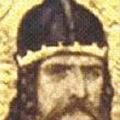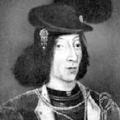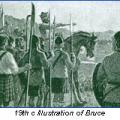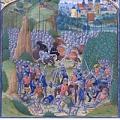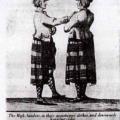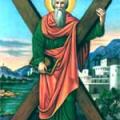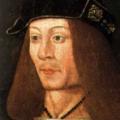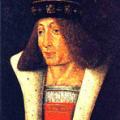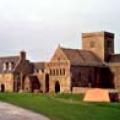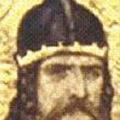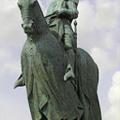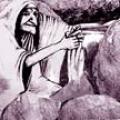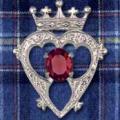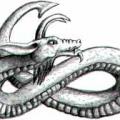Categories
Most Liked
Posted on July 17, 2013
by Amanda Moffet
by Amanda Moffet
Posted on May 12, 2013
by Chas Mac Donald
by Chas Mac Donald
Posted on August 29, 2013
by Amanda Moffet
by Amanda Moffet
Posted on February 7, 2013 by Donald | 7 views | comments
Cináed mac Ailpín was king of the Picts and, according to national myth, first king of Scots. Cináed's undisputed legacy was to produce a dynasty of rulers who claimed descent from him. If he cannot be regarded as the father of Scotland, he was the founder of the dynasty which ruled that country f...
Posted on February 7, 2013 by Donald | 7 views | comments
James III of Scotland was the son of James II and Mary of Gueldres. James was an unpopular and ineffective monarch owing to an unwillingness to administer justice fairly, a policy of pursuing alliance with the Kingdom of England, and a disastrous relationship with nearly all his extended family.
...
Posted on February 6, 2013 by Donald | 6 views | comments
During the Wars of Independence, Philip de Mowbray agreed to surrender Stirling Castle if not assisted by England. Edward II therefore came across the border and by the time he left Edinburgh for Falkirk on the 22 June, he had amassed an army of sixteen thousand infantry and two and a half thousand ...
Posted on February 6, 2013 by Donald | 6 views | 1 comments
The Battle of Otterburn is remembered as the fight where ‘a dead man won the field’.
A Scottish attack was made in Northumberland on Henry Percy and his estates, led by James Douglas, 2nd Earl of Douglas, on the 5 August 1388. During the fighting, Douglas was very badly wounded.
He told his office...
Posted on February 6, 2013 by Donald | 6 views | comments
The Highland Dress Proscription Act of 1746, designed to punish the clans and destroy their identities and economic structures, was repealed in 1782 after thirty six years in law.
The Repeal went as follows:
"Listen Men. This is bringing before all the Sons of the Gael, the King and Parliament o...
Posted on February 6, 2013 by Donald | 6 views | comments
During the 1300s two dominant branches of the same Clan existed. MacLean of Duart and MacLaine of Lochbuie were headed by two brothers; Eachann Reaganach (Hector the stern) controlled the MacLain of Lochbuie and Lachainn Lubanach (Lachlan the Wily) controlled the stonger Macleans of Duart.
Hecto...
Posted on February 6, 2013 by Donald | 6 views | comments
On the 30th of November St Andrews day is celebrated across Scotland and indeed around the world. So how did this most eligable of all saints come to be Scotland's patron saint?
Saint Andrew was one of the original Christian Apostles, he was the older brother of Saint Peter. The name 'Andres is t...
Posted on February 7, 2013 by Donald | 6 views | comments
The son of King James III and Margaret of Denmark, he was probably born in Stirling Castle. When his father was killed at the Battle of Sauchieburn on June 11, 1488 the fifteen-year-old James took the throne and was crowned at Scone, Perthshire on June 24. The rebels who had gathered at Sauchiebur...
Posted on February 7, 2013 by Donald | 6 views | comments
James II, the son of James I of Scotland and of Joan Beaufort had an elder twin, Alexander Stewart, Duke of Rothesay, who lived long enough to receive a knighthood, but died in infancy. James II gained the nickname "Fiery face" because of a conspicuous vermilion birthmark on his face. James had si...
Posted on February 6, 2013 by Donald | 5 views | comments
Despite his name meaning ‘dove’, Columba was banished from Ireland in 563, aged forty two, for leading battles against greedy Irish monasteries. With twelve supporters he sailed in a curragh to Iona, the island lying a kilometre south-west of the end of Mull.
He crowned his fellow Irishman Aidan Ki...
Posted on February 6, 2013 by Donald | 5 views | comments
The Danes, already well-established through the Hebrides and on the mainland and supported with on-going North Sea crossings, battled with Alba’s Picts in 839 and utterly defeated them.
The North of Scotland experienced a gradual population migration, under the Norse pressure, with the Scots of the...
Posted on February 6, 2013 by Donald | 5 views | comments
In 1304, John Comyn II, known as the Red Comyn after his grandfather, moved his allegiance over to England’s Edward I and sat on his ‘Scottish Council’.
When Robert the Bruce set his plans to resume the War of Independence in 1306, he and Comyn met together in southerly Dumfries at the isolated Fran...
Posted on February 6, 2013 by Donald | 5 views | comments
Its a dark evening and you find yourself wandering in the gathering gloom along the side of a small highland stream. You are alerted by some movement down near the water and spot an old woman apparently washing clothes in the stream. You may be tempted to wander down to the side of the stream and ...
Posted on February 6, 2013 by Donald | 5 views | comments
The Royal Mile is a long cobbled street that runs down from Edinburgh castle to the palace of Holyrood. When Edinburgh castle was first established this was the only accessible route, the castle’s situation on the dark rocky plug of an extinct volcano made it impregnable from all but the east wher...
Posted on February 7, 2013 by Donald | 5 views | comments
Never mind Nessie, the scariest creature ever to roam Scotland was the infamous Linton Worm.
A 'Worm' was another term used for a dragon (orme or worme is the ancient Norse for serpent), and the Linton worm lived in a hollow on the Northeast side of Linton Hill. This area is still known as 'Worm'...
Featured Articles
Most Discussed
Posted on July 16, 2013
by Amanda Moffet
by Amanda Moffet
Posted on February 6, 2013
by Donald
by Donald
Posted on July 17, 2013
by Amanda Moffet
by Amanda Moffet


 View More
View More View Less
View Less